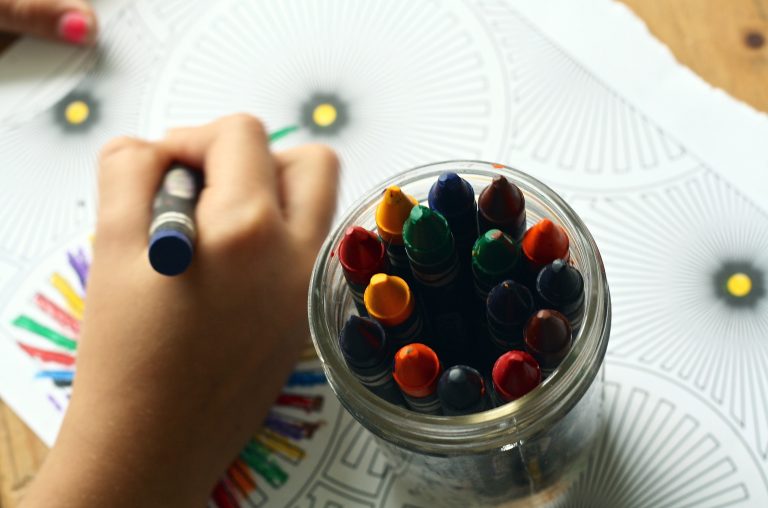
Your Destination: Mandalas have been used for meditation in Eastern Cultures for centuries. Circular in shape and usually containing geometric patterns, they are ritualistic symbols of the universe in both Hinduism and Buddhism. Their often complex and intricate patterns also make them a great mindfulness tool.
Travel Kit: plates, markers, toothpicks, sticks, markers, paint, paintbrushes, glue, buttons, rocks.
On the Path:
Step 1 Students will have to pick if they want to draw or glue together a mandala.
Step 2 Students will write down what aspect they want to work on and then choose colors based on that.
List of colors:
- Green for when you’re feeling sad, hopeless, or depressed. Green can improve your mood.
- Blue is a cold color that can be used to help you become more peaceful and relaxed.
- Yellow can bring energy and encourage action. It makes you feel happier, and bring out your intelligence and wisdom.
- Orange signifies abundance, pleasure, and well-being. It can increase your feelings of connectedness between your mind and body.
- Red can cause intense agitation. Color therapists avoid shining red on your head because of this. However, red can also signify love and strong emotions.
- Purple is most strongly associated with beauty, spirituality, and bliss. It is often used on the forehead and neck to initiate feelings of calm and relaxation.
Step 3 Begin creating a mandala, then share art work with others.
Group Tour: With this project, students will explore their inner self. Mandalas are used for insight, healing, and self-expression in a circular design, reflecting the wholeness of the person creating it.
Extend Your Journey:
Learn New Vocabulary: symmetric, calm, improvise, mindful, focus, creative, sacred.
Discover: Mandalas may boost benefits of meditation

